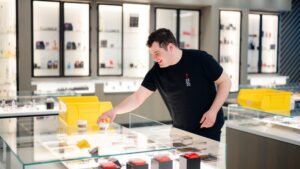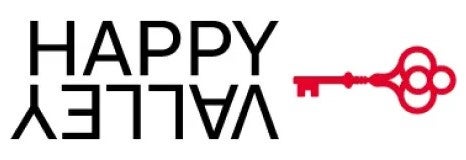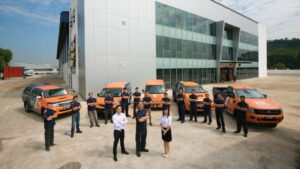Bruce Cohen founded Auto Action Technologies in 1978 to sell car dealers aftermarket automotive accessories. He expanded the business over the ensuing 27 years adding several related businesses such as car washes and limo services. The company installed accessories at car dealers or any one of Auto Action Technologies’ installation centers.
In 2005, as son Jared Cohen graduated from college with plans to pursue a career in the restaurant business, tragedy struck the family when Bruce passed away unexpectedly from a heart attack. Cohen’s mom, Brenda, asked Jared to consider running the automotive business, which he has done ever since.
“I didn’t know much about cars at the time, but certainly learned quickly,” Jared Cohen says. Among his smartest moves was asking Joe Cardinale, head of sales under Bruce, to be his partner. Cardinale now owns 50 percent of Auto Action Technologies and other related businesses with Jared. “I knew right away I had nothing without him,” says Cohen.
As a student of business right out of college, Cohen examined the company’s systems and learned they were archaic and needed to be replaced. In 2006, Auto Action Technologies upgraded to a Linux system called Millennium Power Base, a blue-screened Pick database system that managed sales, GL, and had a custom web app that allowed Cohen to view the status of installation work in progress.
“I had ambitions that we’d expand the business model and take over the East Coast with more locations,” Cohen says. “We opened locations in Philadelphia, two in New York, and two in New Jersey. I was young and foolish, and as we launched five new locations, I was like ‘Oh wow, this is not as easy as it looks.’”
While Millennium’s custom dashboard provided a view of the data, it didn’t do much else, and Cohen quickly scaled operations back to its original installation facility. He serviced new regional clients acquired during the expansion from the one location or from dealers’ sites, which required the staff to keep track of where cars and installers were, track installation job status, and what needed to be delivered.
When car manufacturers began to include aftermarket accessories like remote starters and CD disk players and changers based on consumer-demand, Auto Action Technologies shifted gears and started installing leather seats, sunroofs, and other automotive accessories. But what, Cohen debated, could he do with his electronics installers?
Cohen spotted several trends allowing him to pivot the business: connected cars and distracted driving. Auto Action Technologies won a bid to install safety devices in 1,600 cars as part of Tampa’s Vision Zero project, which is a strategy to eliminate traffic fatalities and severe injuries. First implemented in Sweden in the 1990s, Vision Zero is gaining momentum in the U.S.
“Everyone was talking about the new technologies, but no one was addressing how they would integrate or install it,” Cohen says. “We realized it wasn’t simple, but we could be key to installing it from an aftermarket perspective.”
Larger Clients Required a Better Business Solution
Auto Action Technologies now has a national footprint of public and private clients in addition to dealers, including Siemens and Verizon, and installs aftermarket safety and accessories on all vehicle types, including school and transit buses, fire, ambulance, and other emergency vehicles.
Growth into new services and a larger number of transactions highlighted the inefficiencies of its Millennium Power Base system and illuminated the business’ over-reliance on a programmer to dump data into a spreadsheet and format it so executives could understand it.
As Cohen began researching ERPs, he met Patricia Bennett of PC Bennett Solutions, who helped Cohen better understand ERPs and what they could offer. After looking at Microsoft Dynamics and other ERPs, Cohen met with Bennett and learned more about Acumatica Cloud ERP, what customization Auto Action Technologies might require, and how the company could operate with Acumatica’s Advance Financials with Field Service Management.








